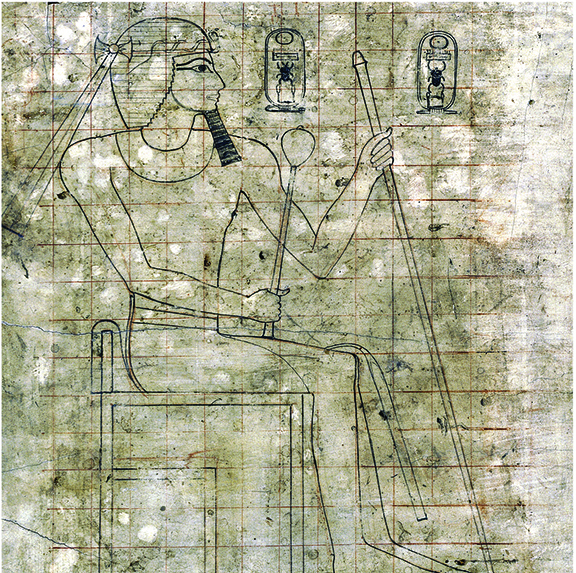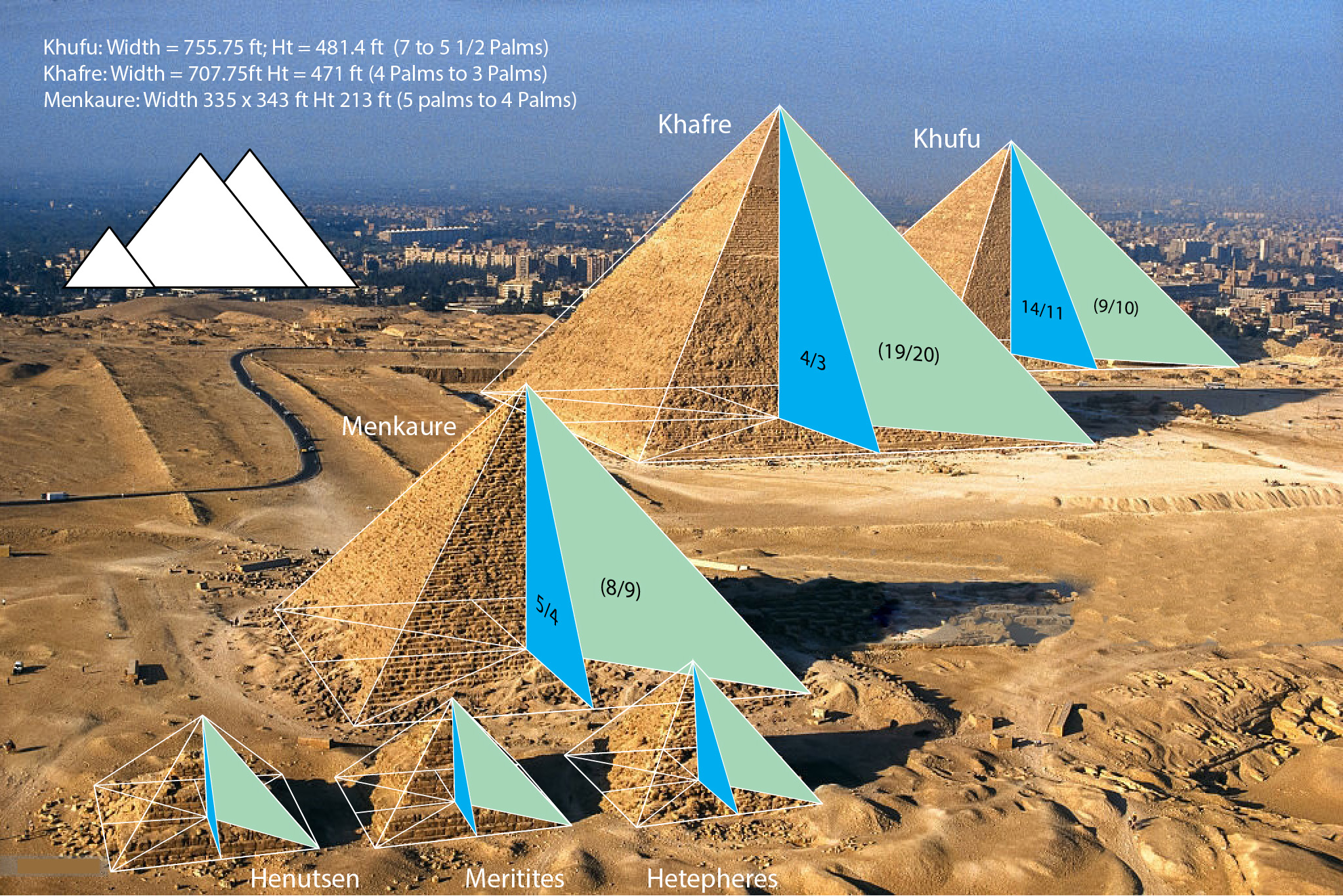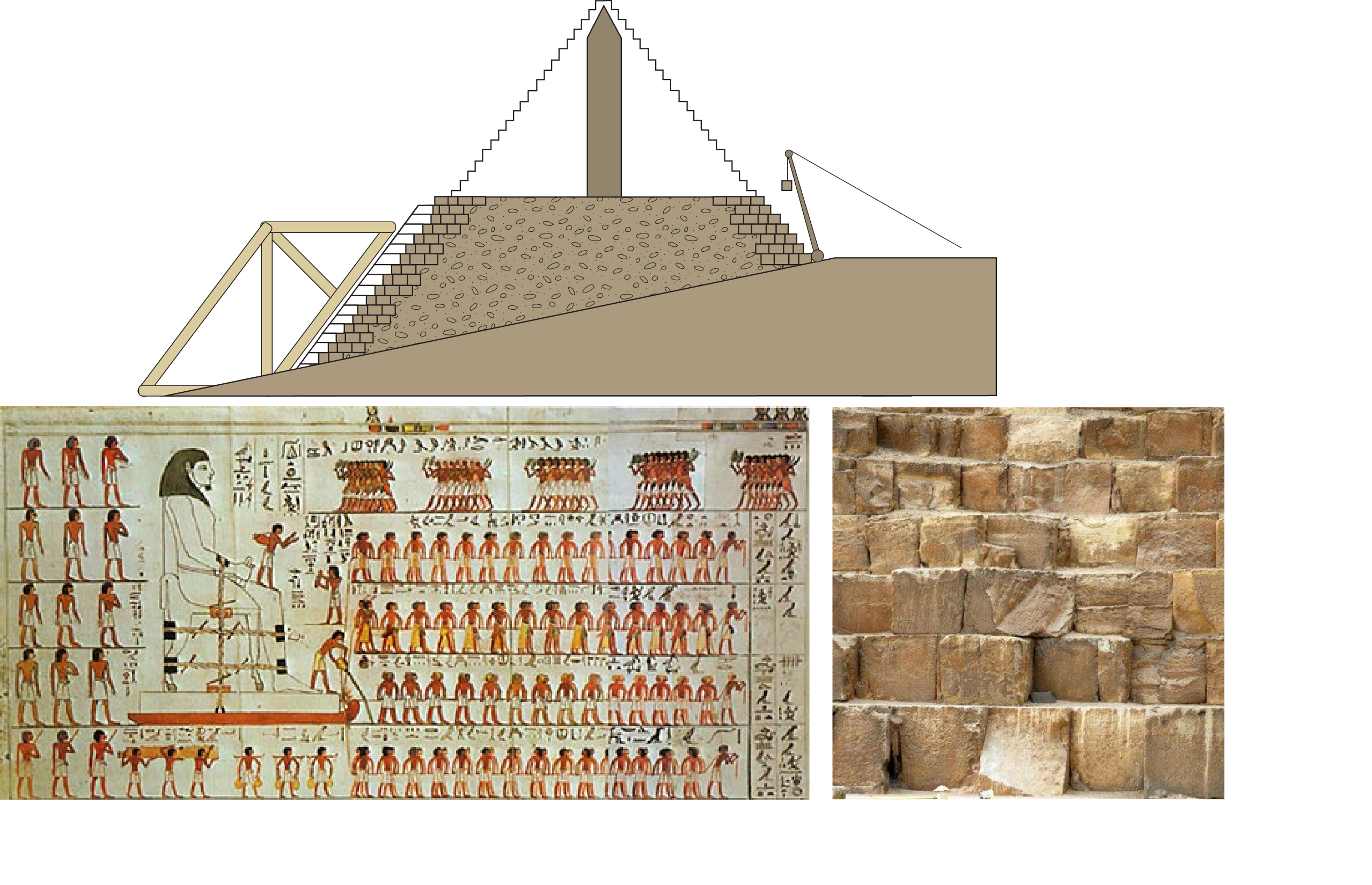Geometry Ancient Egypt – Pyramid Proportions
“3D Thinking” Page 74 to 87: The slope ratios, dimensions, construction, and alignment methods, of the Pyramids of Ancient Egypt:
THE SLOPES OF THE PYRAMIDS OF EGYPT
Given the whole number traditions of ancient Egypt one would expect the slopes of the pyramids to be in whole number proportions too. Whole number grids of square and cubes were used to proportion both wall designs and three-dimensional structures. To use whole number proportions to control the slopes of the pyramids during construction would make sense as they are easy to communicate and measure. Given that the pyramids in ancient Egypt are in such poor state determining actual dimensions and slopes is not easy unless some facing stones survive. Best estimates of slopes are as follows where the exception seems to be the pyramid of Neferirkare where the slope is closer to an irrational than to a whole number ratio – but it does seem proportional to the diagonal of a square – and that in itself might have been fairly easy to control. Geometry Divine Proportions
Whole number grids of square and cubes were used to proportion both wall designs and three-dimensional structures. To use whole number proportions to control the slopes of the pyramids during construction would make sense as they are easy to communicate and measure. Given that the pyramids in ancient Egypt are in such poor state determining actual dimensions and slopes is not easy unless some facing stones survive. Best estimates of slopes are as follows where the exception seems to be the pyramid of Neferirkare where the slope is closer to an irrational than to a whole number ratio – but it does seem proportional to the diagonal of a square – and that in itself might have been fairly easy to control. Geometry Divine Proportions
ESTIMATED DIMENSIONS AND SLOPE RATIOS
KHUFU (CHEOPS) 14/11 Base 232.4m x Ht 146.7M; KHAFRE (CHEPHREN) 4/3 Base 215.3m x Ht 143.5m; SNEFRU (Red Pyramid) 1/1? Base 218.5 m x Ht 104.4 m; NEFERIRKARE √2 Base 104m x Ht 73.5m; DJOSER 1/1 ?Base 125m x 109 m Ht 62m; MENKAURE (MYCERINUS) 4/3 Base 102.2m x 104.6m Ht 65 m; HETEPHERES 4/3 ? Base 45.5m x 46.5m x 45.7m Ht x 29m; MERITITES 4/3 Base 47.8m x 49.4m x 48.2 x 47.1m Ht 30.5m; HENUTSEN 4/3 Base 45.5m x 46.8m x 45.2m Ht 30.6m. Note that the 4/3 ratio is that of the 3,4,5 triangle – later to be called a Pythagorean triple.

CONSTRUCTION
There are many theories regarding the construction of the pyramids including ramps that spiral around the pyramids, or a long ramp sloping up one side, upon which limestone blocks weighing in the order of between 1.3 to 10 tons would be pulled up, as shown in wall paintings, on wooden sleds. Other theories include the use of rollers or pulleys and cranes. Most theories include constructing the pyramids in layers – where, for example, the Khufu pyramids has 210 layers with larger stones (1.5m) in the lower layers and smaller towards the top (approx 1.25m x 1.25m x 0.75m).
ALIGNMENT
A most interesting challenge when constructing the pyramids of ancient Egypt would have been to maintain alignments of the square profiles of the layers, the angle of the slopes and the centering of the top. Now that the inner stone layers are visible we can see the irregularities of the stones used so a precise alignment based on just stacking the stones would have been difficult but not impossible. Building a wooded frame or scaffold that would precisely enclose the space within which the pyramid would be built would have been a great option but it is doubtful that enough timber would have been available. Constructing a central tower of stone might have been a possibility – the Washington monument is 170 meters (555 feet) high and such a tower would provide alignment points through all phases of construction. If alignment was based on a layer-by-layer method then whole number ratios would have been particularly useful as triangular wooden tools with plum bobs could have been built with a fair degree of accuracy – but as layers accumulated a lot of adjustments would have to have been made to limestone block positions. It is possible that fairly large alignment wooden tools were used maybe in the order of 30 or more feet and positioned semi-permanently during construction and on all sides of the pyramid. A means of compensating for misalignments would have been that of customizing the external white limestone covering blocks.
